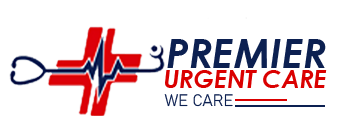
WORKPLACE ACCIDENTS

Depending on the environment and occupation, workers may be at risk of the following accidents:
-
Slips, trips, and falls
-
Caught in or between hazard
-
Struck by moving machinery
-
Transportation and motor vehicle accidents
-
Fire and explosions
-
Overexertion and repetitive stress injuries
-
Struck by a falling object
-
Machine entanglement
-
Assault or workplace violence
-
Structural collapse
-
Exposure to toxic chemicals and pollutants
-
Electrical accident
-
Confined space accident
-

A workplace accident may lead to the following injuries:
-
Traumatic brain injury
-
Back injury
-
Internal damage
-
Concussion
-
Fracture
-
Severe sprain of wrists or ankles
-
Contusions, abrasions, and lacerations
-
Compressed disc
-
Disc dislocation
-
Soft tissue injury
-
Neuromuscular dysfunction
-
Quadriplegia or paraplegia
-
Torn tendon and/or ligament
-
Nerve damage
-
Broken hips/pelvis
-
Spinal cord injury or cut
-
-
After an accident, workers may experience the following symptoms:
-
Drowsiness
-
Dizziness
-
Confusion
-
Headache
-
Loss of consciousness
-
Sensitivity to light and sound
-
Changes in mood
-
Irritability
-
Delayed reaction
-
Pain that worsens with movement
-
Tenderness
-
Soreness
-
Stiffness
-
Impaired mobility
-
Muscle spasms
-
Difficulty standing upright
-
Swelling
-
Bruising
-
Radiating pain
-
Fatigue
-
Nausea
-
Vomiting blood
-
Abdominal pain
-
Change in bowel movements
-
Fainting
It’s important to seek medical attention immediately after an accident to avoid long-term damage and ensure a full recovery. Some injuries only become evident after a thorough evaluation involving diagnostic exams, such as X-Rays.
-
Workplace accidents may lead to unbearable chronic pain. At Premier Urgent Care, patients can experience lasting pain relief and begin their recovery with personalized treatment that includes injections and pain management techniques.
Joint and soft tissue injections, such as nerve blocks, epidural injections, piriformis injections, sacroiliac joint injections, and trigger point injections, could help alleviate symptoms and provide significant pain relief. Patients should speak to their physician to find out if they are a good candidate for joint and soft tissue injections.
Pain management techniques are another way to minimize pain. These techniques may incorporate cold and heat therapy, gentle exercise, physical therapy, massage, acupuncture, cognitive behavior therapy, yoga, deep breathing exercises, progressive muscle relaxation, biofeedback, music therapy, and non-steroidal anti-inflammatory medication.
Severe injuries caused by a workplace accident, such as broken bones, traumatic brain injury, and internal bleeding, may require advanced treatment that may include chiropractic adjustment, physical therapy, and even surgery. Premier Urgent Care supports patients needing a range of treatments and staff members are available to answer any questions about obtaining advanced treatment.
The workplace has become considerably safer over the past few decades, thanks to enhanced safety protocols and increased awareness of safety risks. However, workplace accidents still occur in a range of settings and lead to injuries that require comprehensive treatment.
